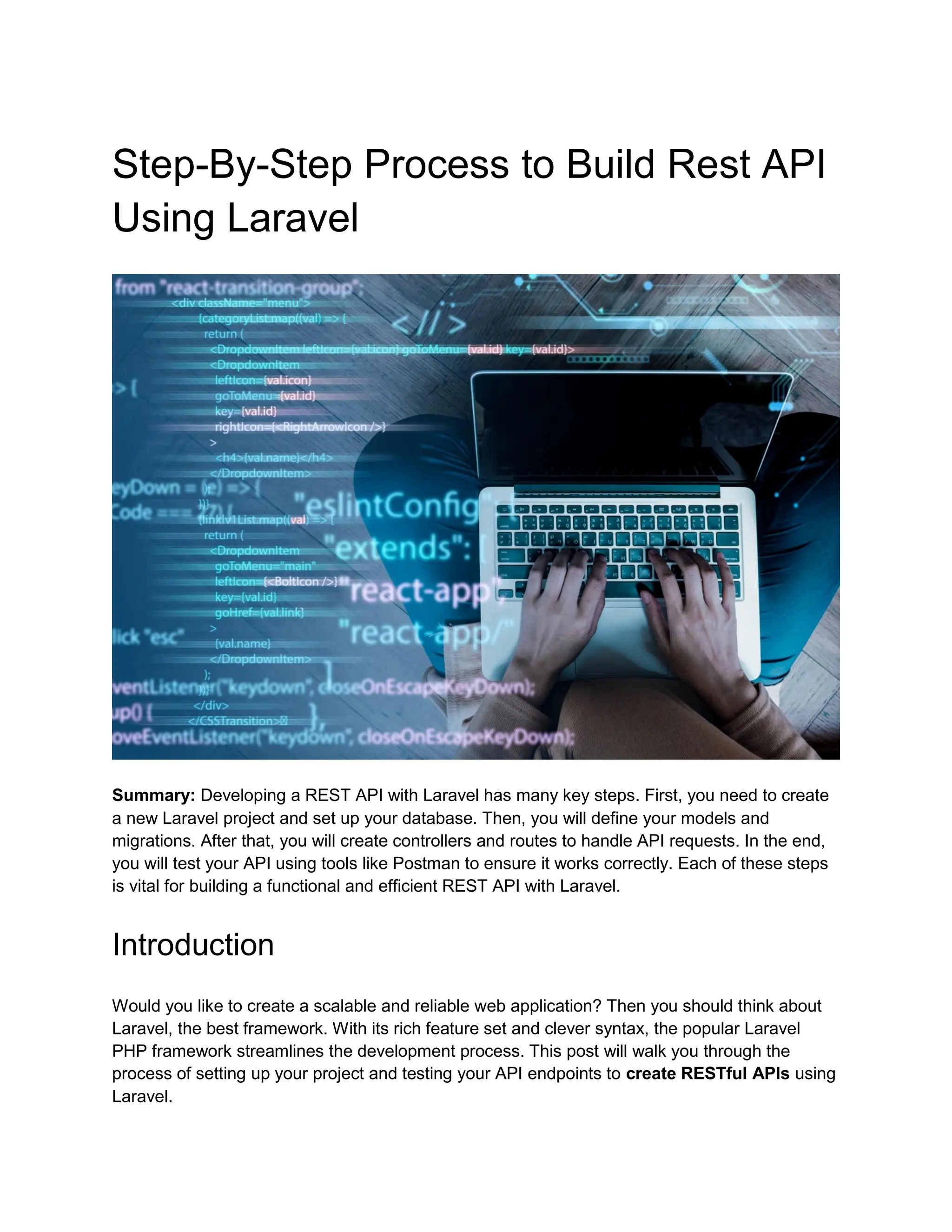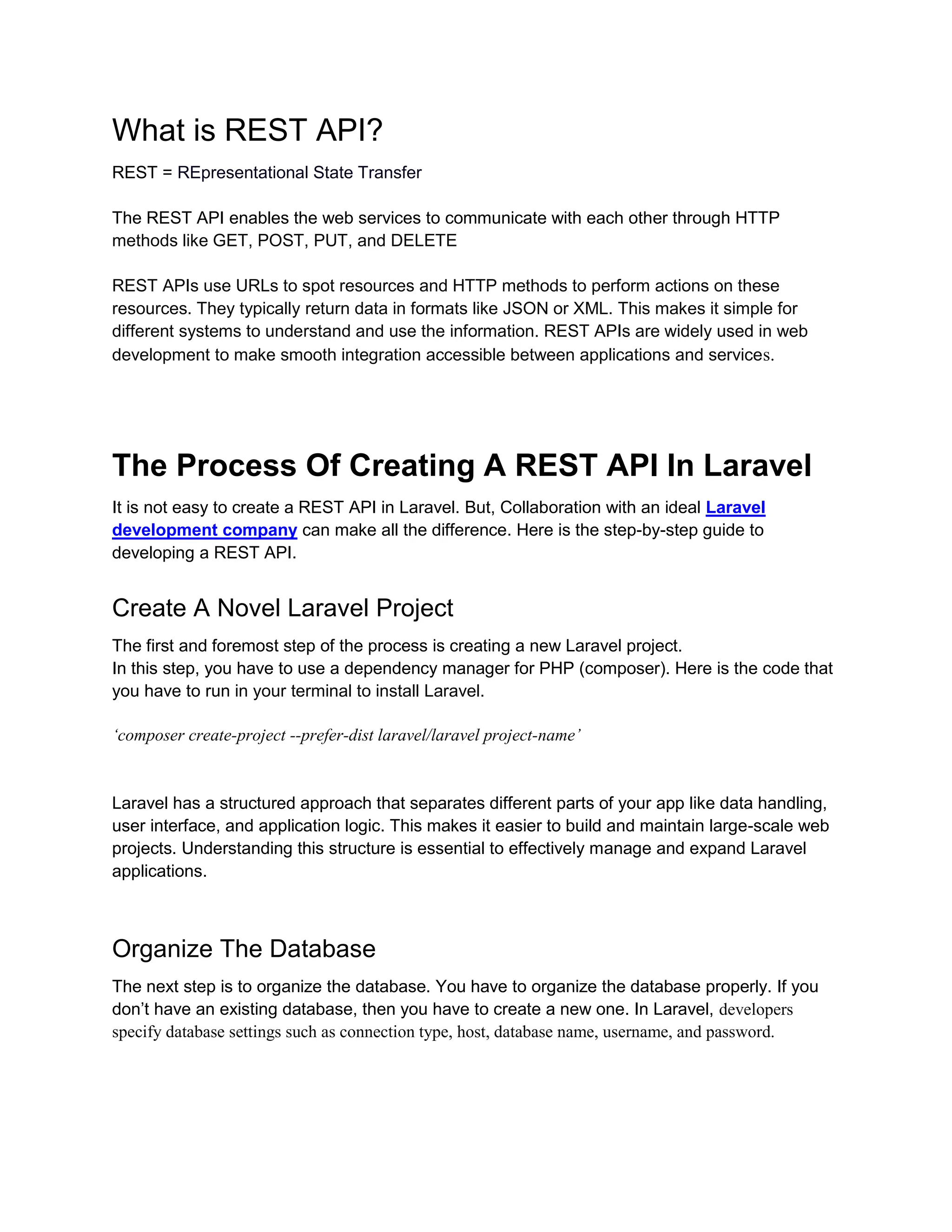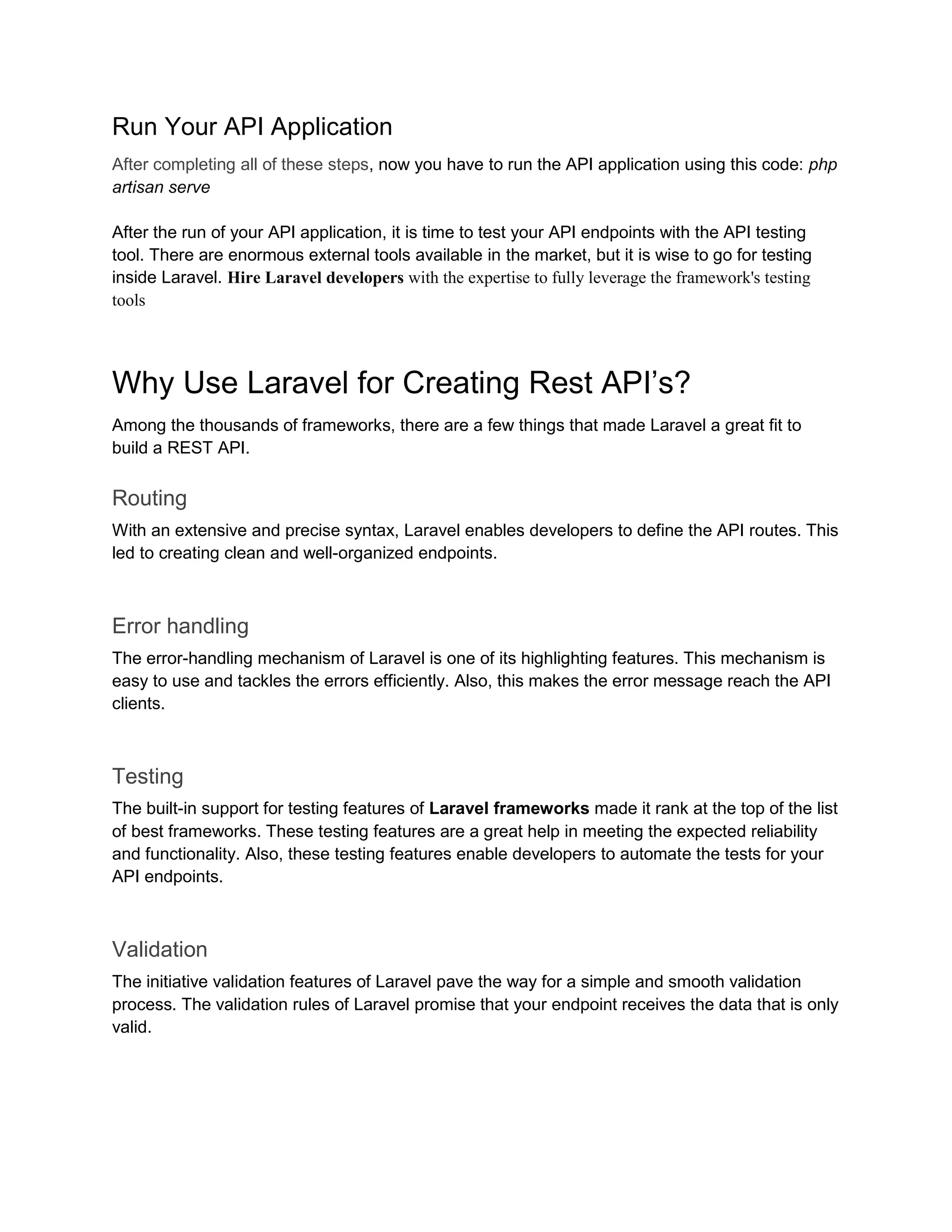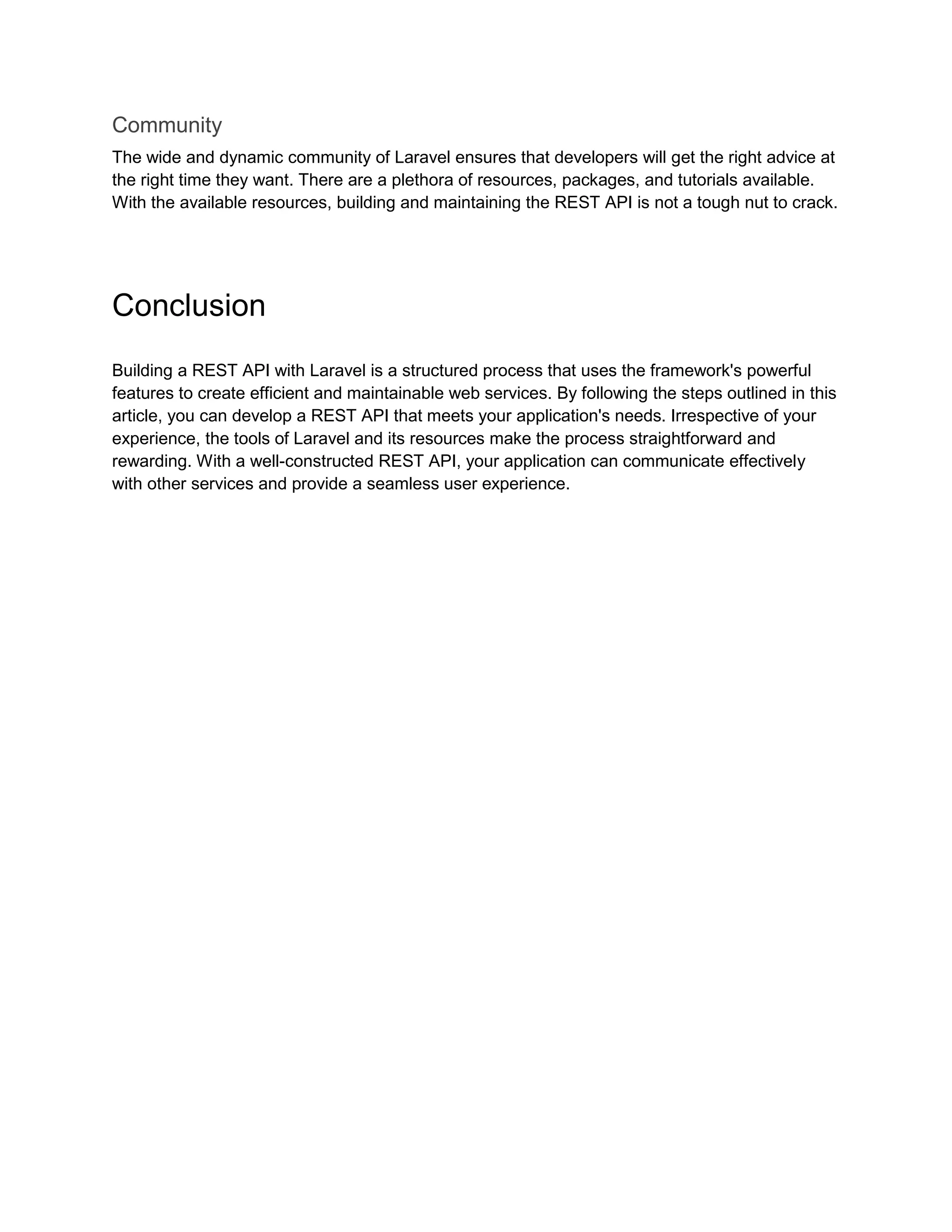This document outlines a step-by-step process for building a REST API using the Laravel framework, starting with creating a new project and setting up the database. Key steps include defining models, creating controllers and routes, and testing the API with tools like Postman. It emphasizes Laravel's structured approach and features such as error handling, validation, and community support that facilitate efficient API development.




